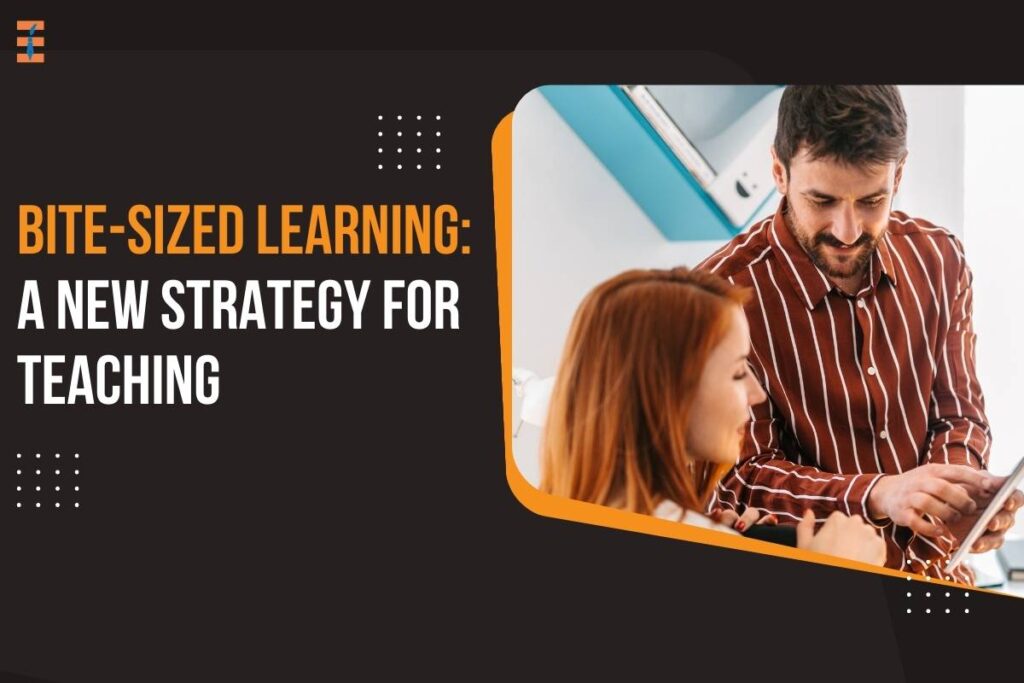In the ever-evolving landscape of education, innovative strategies are continually sought to enhance learning experiences. One such approach gaining prominence is “Bite-Sized Learning.” This method stands in stark contrast to traditional lengthy lectures and cumbersome textbooks, offering a dynamic and digestible way for students to absorb information. This comprehensive exploration delves into the concept of Bite-Sized Learning, examining its principles, benefits, and applications in modern education.
Understanding Bite-Sized Learning:
It, often referred to as microlearning, involves breaking down educational content into small, easily digestible units. These bite-sized modules typically span a duration of a few minutes, focusing on specific learning objectives. The approach aligns with the idea that shorter, focused bursts of learning are more effective in capturing and retaining students’ attention and comprehension.
Key Principles of Bite-Sized Learning:
1. Conciseness
Bite-sized modules are characterized by their brevity. Each segment addresses a specific concept, ensuring that information is presented concisely without overwhelming the learner. This allows for efficient use of time and facilitates better retention.
2. Focus on Specific Objectives

Each module hones in on a particular learning objective. This targeted approach ensures that students grasp one concept before moving on to the next, preventing cognitive overload and promoting a clear understanding of individual topics.
3. Accessible Anytime, Anywhere
Bite-sized content is designed for accessibility. Whether through online platforms, mobile apps, or other digital mediums, learners can access these modules at their convenience. This flexibility accommodates different learning styles and schedules.
4. Engaging Multimedia Elements
To enhance the learning experience, bite-sized modules often incorporate engaging multimedia elements. Videos, animations, quizzes, and interactive content not only make the learning process enjoyable but also cater to diverse learning preferences.
5. Adaptive Learning Paths
Adaptive learning platforms use data analytics to tailor content based on individual progress and performance. This personalized approach ensures that students receive content at an appropriate pace, addressing their specific strengths and areas that require reinforcement.
Benefits of Bite-Sized Learning:
1. Increased Engagement
The concise and focused nature of bite-sized modules captures and sustains learners’ attention. With shorter segments, students are less likely to experience information fatigue, leading to increased engagement with the material.
2. Improved Retention
Breaking down complex topics into manageable pieces aids in better retention. Learners can grasp and remember information more effectively when it is presented in small, digestible chunks.
3. Flexibility in Learning
Bite-sized learning caters to the busy schedules of modern learners. Whether commuting, waiting in line, or during a short break, students can access these modules, making learning a seamless part of their daily lives.
4. Targeted Review
Bite-sized content allows for a targeted review of specific concepts. Students can revisit individual modules to reinforce understanding or clarify doubts, promoting a deeper and more nuanced comprehension of the material.
5. Adaptability to Diverse Learning Styles
Recognizing that learners have varied preferences, it accommodates different styles. Visual learners may benefit from videos, while interactive quizzes appeal to those who thrive on hands-on activities.
Applications in Modern Education:
1. Corporate Training

It is gaining traction in corporate training programs. Employees can engage in short modules to acquire new skills, stay updated on industry trends, or undergo compliance training without disrupting their workday.
2. Professional Development
In the realm of professional development, educators and professionals can utilize bite-sized modules to enhance their skills. These concise learning units provide opportunities for continuous learning and skill refinement.
3. Language Learning
Language learning apps often employ the bite-sized approach. Short lessons focusing on specific vocabulary, grammar rules, or conversational phrases enable learners to progress at their own pace.
4. K-12 Education
In primary and secondary education, incorporating bite-sized learning can enhance traditional teaching methods. Short modules can serve as supplementary resources, allowing students to revisit concepts independently or engage in interactive activities.
5. Higher Education
In higher education, especially in online courses, incorporating bite-sized learning can cater to the diverse needs of students. Modules can be designed to cover specific topics, making it easier for students to navigate complex subjects.
Challenges and Considerations:
While it offers numerous advantages, it is essential to acknowledge potential challenges and consider them in the implementation process.
1. Comprehensive Coverage
Ensuring that all essential topics are adequately covered within bite-sized modules requires careful planning. Educators must design a curriculum that maintains a cohesive and comprehensive structure.
2. Technology Requirements
While bite-sized learning can be accessible through various digital platforms, educators must consider the availability of technology for all students. Efforts should be made to bridge the digital divide and provide equitable access.
Balancing Depth and Brevity
Striking the right balance between delivering meaningful content and keeping it concise is crucial. Educators must ensure that each module contributes substantively to the overall learning objectives.
3. Monitoring Progress

Implementing adaptive learning paths requires effective monitoring of student progress. Educators should have mechanisms in place to track individual performance and provide timely feedback.
Conclusion: Revolutionizing Learning Through Bite-Sized Modules:
In the dynamic landscape of education, where attention spans compete with an abundance of information, Bite-Sized Learning emerges as a compelling strategy. By embracing the principles of conciseness, focus, accessibility, engagement, and adaptability, educators can revolutionize the learning experience for students across various educational settings.
As technology continues to advance and educational paradigms evolve, the bite-sized approach aligns seamlessly with the needs and preferences of modern learners. The journey towards a more effective and engaging education system involves recognizing the transformative potential of Bite-Sized Learning and harnessing its power to cultivate a generation of agile, curious, and lifelong learners.
Also Read: 10 Reasons m-Learning Will Revolutionize Education










